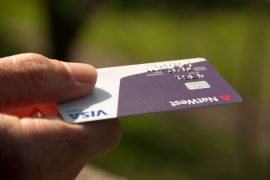NatWest first UK bank to use fingerprint contactless credit card with £100 limit
NatWest is the first UK bank to introduce a biometric fingerprint credit card, starting its three-month national pilot today with 150 customers.

The new card trial will last for three months
Partnering with Mastercard and digital security provider Gemalto, a Thales company, NatWest is now trialling biometric credit cards following its recent experiment with the debit vairety.
The cards will enable customers to make contactless payments using fingerprint verification. Transactions of up to £100 will be allowed through this method, a significant increase on the current £30 contactless limit. The card will light up green when the fingerprint has been matched successfully.
The card can be used in ATMs as normal and for online shopping. Existing contactless and Chip and PIN terminals will also accept these biometric cards, which require no additional technology to accept them.
Read more: NatWest banking glitch leaves accounts exposed
“This is the biggest development in card technology in recent years and not having to enter a PIN not only increases security but makes it easier for our customers when paying for goods or services,” says NatWest’s director of innovation Georgina Bulkeley.
Using a plastic sleeve, customers can enroll at home “in just five minutes”. Once a digital fingerprint is locked onto a card, it cannot be changed and the user’s biometric data never leaves the card. The merchant and the bank never receive the biometric data, and no fingerprints are stored in a cloud.
“Feeling confident that your information is protected is paramount,” says Mastercard company Identity Solutions’ executive vice president Bob Reany. “We, along with our partners, are building biometric cards that recognise an individual rather than a password or PIN. Biometrics are more secure, more trusted and better suited to a world that requires more frequent authentication.”
Gemalto’s senior vice president of UK Ireland and Switzerland Howard Berg says this payment method will “open the door to larger contactless payments”.












































How does it charge ?
It’s science